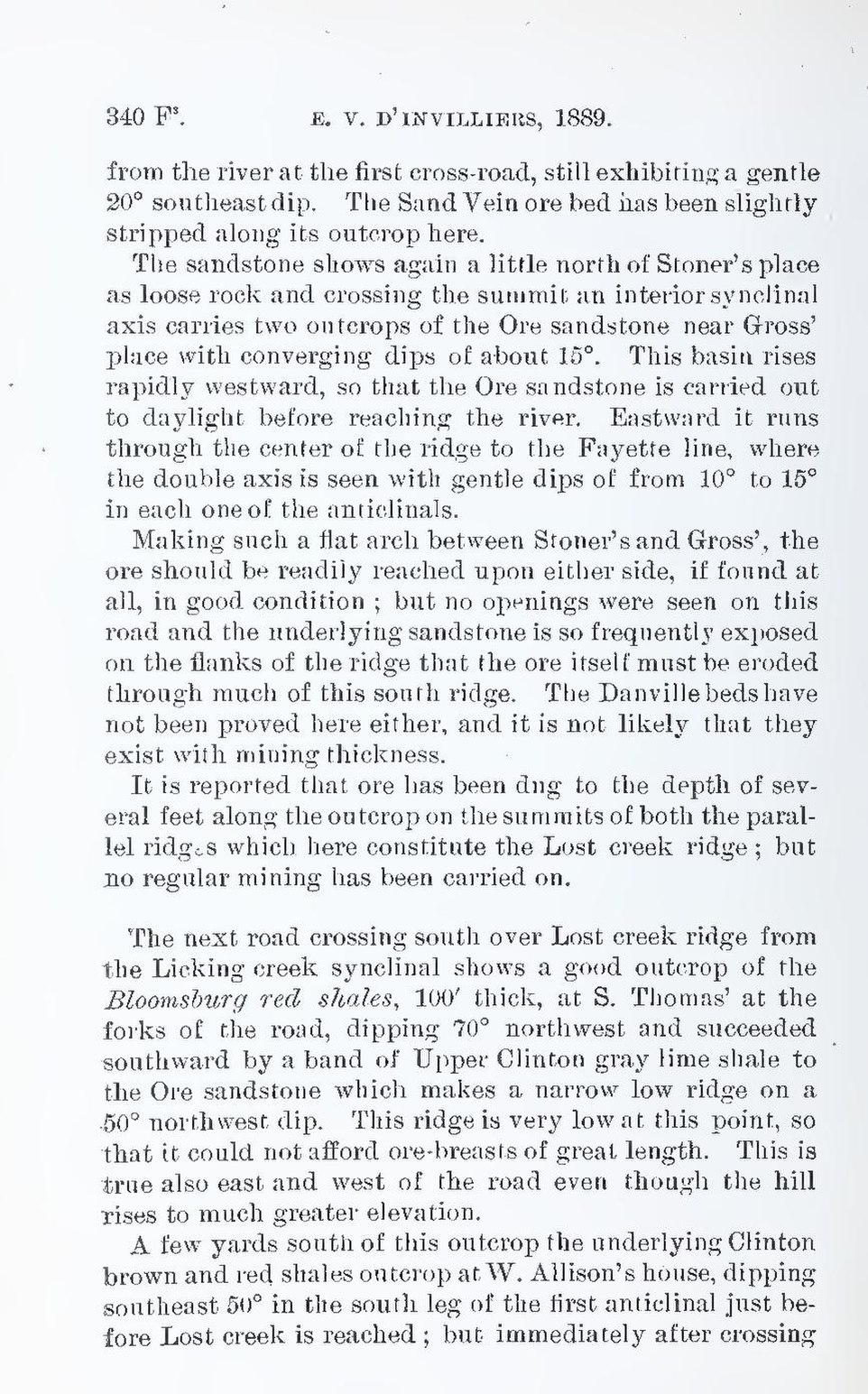from the river at the first cross-road, still exhibiting a gentle 20° southeast dip. The Sand Vein ore bed has been slightly stripped along its outcrop here.
The sandstone shows again a little north of Stoner’s place as loose rock and crossing the summit an interior synclinal axis carries two outcrops of the Ore sandstone near Gross’ place with converging dips of about 15°. This basin rises rapidly westward, so that the Ore sandstone is carried out to daylight before reaching the river. Eastward it runs through the center of the ridge to the Fayette line, where the double axis is seen with gentle dips of from 10° to 15° in each one of the anticlinals.
Making such a flat arch between Stoner’s and Gross’, the ore should be readily reached upon either side, if found at all, in good condition; but no openings were seen on this road and the underlying sandstone is so frequently exposed on the flanks of the ridge that the ore itself must be eroded through much of this south ridge. The Danville beds have not been proved here either, and it is not likely that they exist with mining thickness.
It is reported that ore has been dug to the depth of several feet along the outcrop on the summits of both the parallel ridges which here constitute the Lost creek ridge; but no regular mining has been carried on.
The next road crossing south over Lost creek ridge from the Licking creek synclinal shows a good outcrop of the Bloomsburg red shales, 100′ thick, at S. Thomas’ at the forks of the road, dipping 70° northwest and succeeded southward by a band of Upper Clinton gray lime shale to the Ore sandstone which makes a narrow low ridge on a 50° northwest dip. This ridge is very low at this point, so that it could not afford ore-breasts of great length. This is true also east and west of the road even though the hill rises to much greater elevation.
A few yards south of this outcrop the underlying Clinton brown and red shales ontcrop at W. Allison’s house, dipping southeast 50° in the south leg of the first anticlinal just before Lost creek is reached; but immediately after crossing
